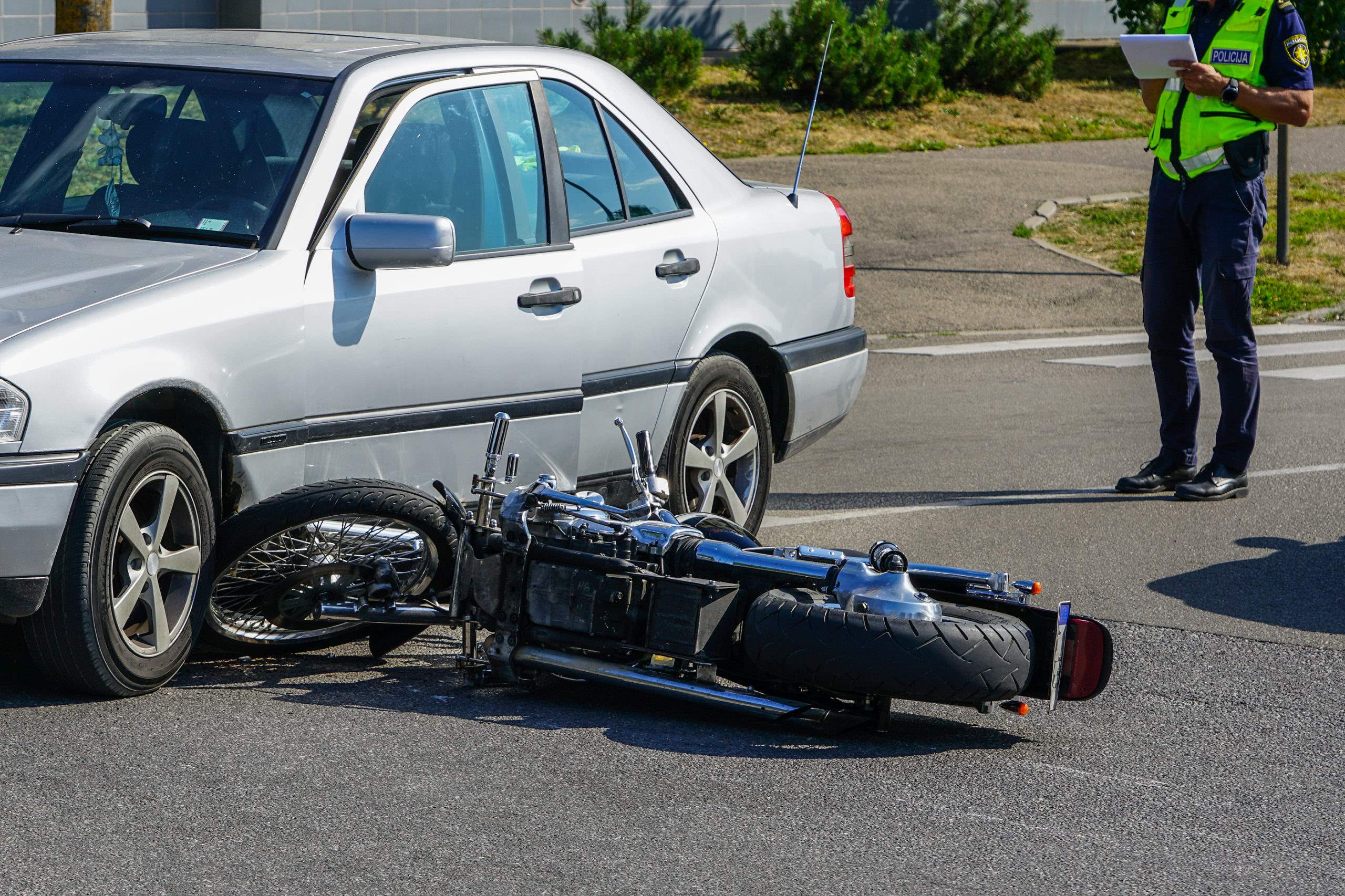After a serious motorcycle accident, few words sting more than hearing the driver say, “I didn’t see the bike.” For the rider—now injured, hospitalized, or worse—this isn’t just an excuse. It’s an admission of carelessness. Yet this phrase appears in police reports, witness statements, and courtroom testimony again and again.
Left-turn motorcycle crashes are not freak incidents. They’re predictable, preventable collisions that often occur in clear daylight, at marked intersections, with riders following traffic laws. The problem isn’t that motorcycles are invisible—it’s that drivers fail to look for them. And in Nevada, where year-round riding is common, ignoring motorcycles on the road has consequences that reach far beyond inconvenience.
Why Left Turns Are the Deadliest Move in Traffic
Left turns rank as the most statistically dangerous maneuver for drivers, especially at intersections. These turns involve crossing oncoming traffic while estimating speed and distance, often under significant pressure. When drivers overlook or misjudge an approaching motorcycle, the outcome frequently leads to severe collisions, where the rider faces the full force.
Motorcycles lack the protective frame that cars have. There are no crumple zones or airbags to absorb impact; the rider comes into direct contact with the pavement during a crash. This vulnerability results in injuries that can be devastating.
Crashes involving motorcycles often lead to traumatic brain injuries, spinal damage, broken bones, and even fatalities. The consequences of such accidents are not just minor inconveniences; they can be life-altering or life-ending.
“Inattentional Blindness” Isn’t a Justification—It’s a Warning
Many drivers genuinely believe they looked both ways. However, science presents a different perspective. A psychological phenomenon known as “inattentional blindness” explains how people overlook what they aren’t expecting to see, even when it’s in plain sight. Often, drivers subconsciously focus on larger vehicles instead of motorcycles.
This tendency does not excuse the mistake. Instead, it reveals a cultural blind spot in driver training and road design. Motorcyclists are not rare or optional; they are legal and vulnerable road users who deserve attention.
When drivers neglect to consider motorcyclists, it goes beyond a simple oversight. Such actions reflect negligence and underscore the need for increased awareness and education about all road users.
The Law Doesn’t Accept “I Didn’t See Them” as a Defense
In Nevada and most other states, drivers making a left turn must yield to all oncoming traffic. This requirement applies to cars, trucks, and motorcycles alike. Failing to yield constitutes a violation of traffic law and establishes a clear basis for liability.
The phrase “I didn’t see the bike” often appears in court, serving as an admission of fault. The law places the responsibility on drivers to check and double-check their surroundings to ensure a safe turn.
If a driver neglects this duty and someone gets injured as a result, they can and should face consequences. It is crucial for drivers to prioritize safety and adhere to traffic regulations to prevent accidents.
How Visibility Bias Hurts Motorcyclists
There’s a hidden bias in how drivers perceive risk. Motorcycles, being smaller, quieter, and less common than cars, often do not register as a threat. Drivers may not intend to overlook them, but intent isn’t what matters. Impact is what counts. A driver’s subconscious bias against recognizing motorcycles can become deadly when split-second decisions are required.
This reality shows that visibility campaigns alone fall short. Riders can wear reflective gear, use daytime running lights, and adhere to every law, yet they may still experience accidents.
The solution lies not in asking riders to enhance their visibility. Instead, we need to focus on ensuring that drivers recognize the motorcycles already present on the road.
Insurance Companies Use the Same Tired Excuse
After a left-turn motorcycle crash, the other driver’s insurance company often tries to shift blame. They might argue that the rider was speeding, weaving, or hard to see. But those arguments don’t change the basic legal principle: the turning driver must yield.
The motorcycle accident lawyers at Valiente Mott know these tactics—and how to dismantle them. Their team builds strong cases based on crash reconstruction, expert testimony, and rider advocacy to ensure that victims aren’t gaslighted out of the compensation they deserve.
The Hidden Costs of “I Didn’t See You”
Motorcycle accidents resulting from negligent left turns lead to more than just emergency room visits and bike repairs. These incidents can devastate careers, burden families financially, and leave lifelong physical and emotional scars. Riders often endure months or even years of recovery, with some facing permanent disabilities.
For families, the emotional toll intensifies due to financial uncertainty and the slow pace of the legal system. The aftermath of such accidents can create a challenging and overwhelming environment, adding to the stress of recovery and adjustment.
These cases involve significant claims that encompass lost income, future medical expenses, pain, suffering, and potential wrongful death. Victims require attorneys who grasp the full extent of their losses, viewing the situation as more than mere damage to a motorcycle.
Changing the Narrative Starts with Accountability
Every time a driver is let off the hook with “I didn’t see them,” the message is clear: motorcyclists are expendable. That narrative must change. Legal accountability is one way to push that change forward. When riders pursue justice—not just for themselves, but to hold drivers and insurers responsible—they send a powerful signal that these excuses won’t stand.
Strong legal action forces change in how companies defend claims, how cities educate drivers, and how society values motorcycle safety. Visibility begins not with a headlight—it begins with being seen in the eyes of the law.
